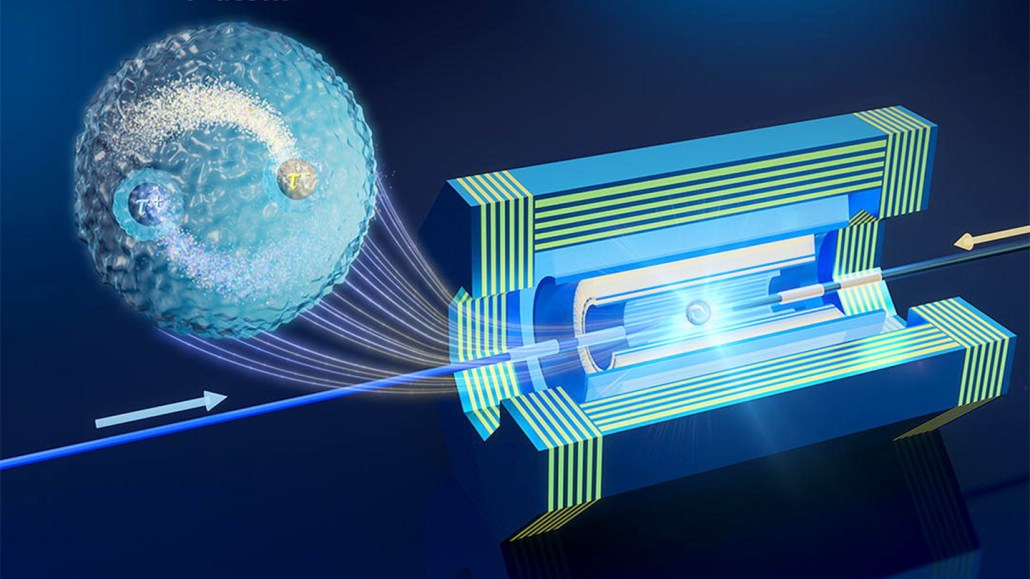Scientists propose a hunt for never-before-seen ‘tauonium’ atoms
Proposed new colliders could create particles composed of heavy relatives of the electron

Scientists could create atoms made of tau leptons (illustrated in upper left) using a particle collider that smashes together electrons and positrons (arrows at right and left, respectively).
J.-H. Fu et al/Science Bulletin 2024